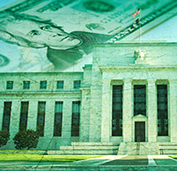
The Beach Blog
Boost Your Credit Score for a Better Mortgage

Lenders use credit scores to decide the type of mortgage you can get and the interest rate and other conditions that you will be offered. At Beach Community Mortgage, we understand that a good credit rating means a cheaper price in the long run and thus affordable homes. Let us share some tips on how to raise your credit score in this article so you can have a better chance of getting a good mortgage deal.
Mortgage Programs for Teachers: Save on Your Home

Being a teacher, you spend your entire career educating others, working for many years, sacrificing your time, and getting comparatively low wages. At Beach Community Mortgage, we are fully aware of the hardships that teachers go through when looking for a home financing solution – that is why we have developed special mortgage programs for educators. These programs are meant to help reduce the financial stress and offer reasonable benefits, so you can spend more time on your students and less on your loan. In this article, we will discuss the types of mortgage that teachers can apply, how it can benefit you and how Beach Community Mortgage can help you.
Refinance or Home Equity Loan: Which is Better?

When a homeowner thinks about the value of his/her house, he/she may start thinking about how it is possible to get some money for other uses such as for shopping, paying off some debts or in case of emerging needs. Two ways of borrowing money against home equity are refinancing and home equity loans, but they are different, and each has its benefits and drawbacks. At Beach Community Mortgage, we will explain these options, their advantages and disadvantages to ensure that you make the right decision. Now, let’s look at how refinancing and home equity loans operate and which option may be right for you.
Cash-Out Refinancing: Pros and Cons

Refinancing to cash out is one of the most desirable solutions for homeowners who need to use the equity they have gained. It entails paying off your current mortgage with a new one but at a higher balance than the one you want to refinance and getting the balance in cash. This option can be used to generate some extra cash to cater for large expenses, paying off debts or even for home remodeling. Nevertheless, there are some benefits and disadvantages of cash-out refinancing. In this article, we’ll discuss the advantages and disadvantages of cash-out refinancing to help you decide whether it is a good idea for you.
Understanding Mortgage Points: How to Save on Your Home Loan

Mortgage points, also known as discount points, offer a unique way for homeowners to lower their monthly mortgage payments. Getting paid for points at the closing may lower your interest rate and translate into thousands of dollars of savings over the life of the loan. But mortgage points are not for everyone and one must know when it is financially beneficial. In this article, you will learn what mortgage points are, how they work, and a few things to consider when deciding if purchasing points is right for your home loan with Beach Community Mortgage.
Mortgage FAQs: Answers to Your Common Home Loan Questions

Navigating the world of mortgages can be overwhelming, especially for first-time homebuyers. From understanding down payments to choosing the right loan type, there are numerous aspects to consider. To help make your journey to homeownership smoother, we’ve compiled a list of frequently asked questions and answers. Whether you’re a new buyer or considering refinancing, Beach Community Mortgage is here to support you every step of the way.
Mortgage Pre-Approval: How It Can Strengthen Your Home Buying Journey

Being pre-approved for a mortgage is very important for anyone who is actually planning to purchase a house. It informs you of your financial capacity, proves to sellers that you have the financial muscle to buy their products, and shortens the time taken to approve your loan. In this guide, you’ll learn about mortgage pre-approval, why it’s important, and how Beach Community Mortgage can assist you in getting pre-approved.
Consumer's Guide to Rate Hikes.

At December's Federal Open Market Committee meeting, the Fed raised its benchmark Federal Funds Rate for the first time in nearly a decade. This is the rate at which banks lend money to each other overnight. It had been near zero to support economic recovery from the worst financial crisis since the Great Depression. The Fed felt that the economy had strengthened enough for a small increase to its benchmark rate.
What does this mean for home loan rates?
The Fed Funds Rate is not directly tied to long-term rates on consumer products, like purchase or refinance home loans. So home loan rates will not increase as a direct result of the Fed's actions.
Instead, home loan rates are based on Mortgage Backed Securities, which are a type of Bond. If the economy continues to improve, home loan rates could move higher. Strong economic news usually causes money to flow out of Bonds and into higher risk investments like Stocks, which can cause Bond prices and home loan rates to worsen.
However, when times are tough, or when there is uncertainty here or overseas (like the recent market crash in China), investors tend to shelter their cash in less risky investments like Bonds. This typically causes both Bond prices and home loan rates to improve.
Time will tell if home loan rates are able to remain near historic lows this year. One thing is certain: This year will be filled with interesting economic activity that is important to you. And, I'll be here to report the latest each and every month. Stay tuned!
If you or anyone you know has questions regarding refinancing or home loan products, please get in touch today.
Down Payment Assistance Programs for Mortgages

Buying a house is a huge investment and for most home buyers, the main challenge is finding the down payment. At Beach Community Mortgage, we know that coming up with a down payment can be difficult for many especially first time homeowners. Thankfully, there are programs specifically for down payments that are aimed at making this process a little easier. In this guide, you will learn about the different types of assistance that are out there, how this works, and how Beach Community Mortgage can assist with these opportunities.
What to Watch: Existing Home Sales.

Existing Home Sales declined sharply from October to November, after a modest decline from September to October. Does this affect the long-term housing outlook?
What is the Existing Home Sales report? The Existing Home Sales report measures sales of pre-owned single-family homes, as reported by the National Association of REALTORS® (NAR) from 650 local associations. It covers geographical numbers, prices, inventory and the number of months it would take to deplete the existing supply of pre-owned houses.
What's happened recently? NAR reported Existing Home Sales in November fell 10.5 percent from October. This was the sharpest monthly decline since July 2010, when sales deflated due to expiring homebuyer tax credits.
What's the bottom line? Lawrence Yun, NAR chief economist, affirmed buying interest is still high but blamed the decline mainly on closing delays caused by new federal "Know Before You Owe" rules implemented by the Consumer Financial Protection Bureau in October. Other factors presenting challenges to potential buyers were rising home prices and lingering tight inventories across much of the country. While regulatory changes and home prices are expected to moderate in 2016, historically low home loan rates make home buying attractive right now.
I'll continue to monitor economic reports closely. If you have any immediate questions about loan products or home loan rates, please call or email today.
